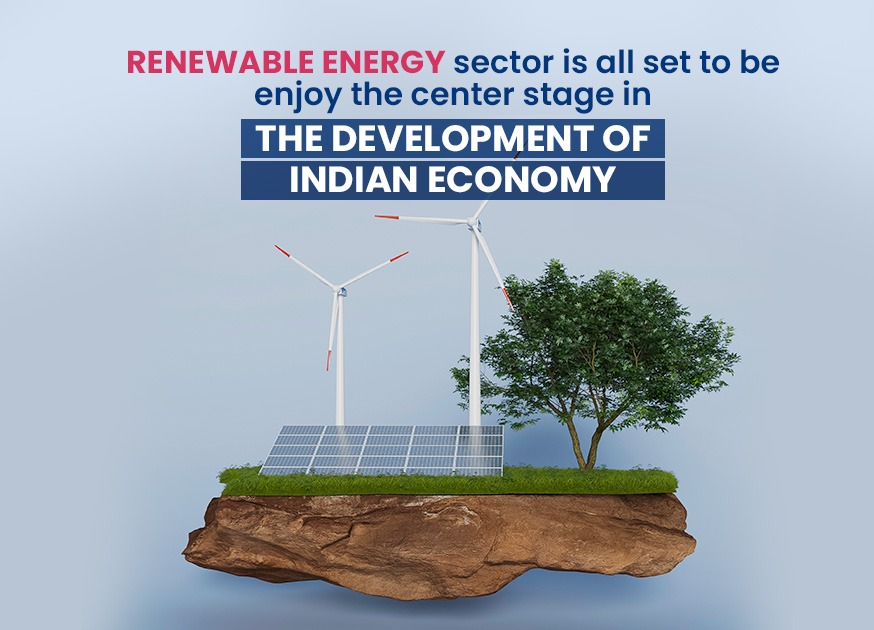
The soaring oil prices and the serious repercussions of non-renewable sources on the environment point toward the importance of energies that are not only affordable but also environmentally friendly. However, the change will not happen overnight. It will take a lot of time and a sufficient amount of money to make renewable energy a major player in the market.
Indeed, a lot of effort and positive effects have been observed in 2022 regarding the renewable energy sector. According to the experts, the country has to put in more effort, be it money or rigorous steps when it comes to achieving the target of 500 GW of clean energy by 2030.
Here, we are going to discuss the steps that need to be taken and the money that needs to be invested in the future to encourage renewable energy in the country.
Ways to increase the use of Renewable energy in India, 2023
1. Investment of 25 USD Billion in renewable energy – India is planning to put forward Rs. 2 lakh crores in renewable energies – Solar, hydro, and wind energy. The investment is huge however its capacity to reduce carbon footprint ensures prosperity for the country and even the world in the long run.
Be it mitigating climate change, lowering energy costs, or gaining immunity to ever-changing fuel prices, investment in renewable energy is an answer to most of our economic and environmental worries.
2. Use of electric vehicles – Around 2 million Electric Vehicles was sold in 2022. This development is good news for everyone rooting for electric vehicles.
Electric Scooter – A breath of fresh air for the two-wheeler owners
From decreasing vehicle costs powered by fossil fuels to reducing air pollution, the advantages of electric vehicles are the most significant ones. Not to forget, with more than 13 lakh electric vehicles running on the road currently, no one can deny the fact that electric vehicles are very much the future of the transport industry. As an result, the GST on sales of electric vehicles was reduced from 12% to 5%.
What more development and initiatives can we expect from the Indian government when it comes to electric vehicles? Well, the following are some of the new inclusions we can expect from the 2023 budget –
(i) Extending the dates for an interest deduction on the loan for purchasing the electric vehicles which means making it 31st March 2025 from 31st March 2023.
(ii) A prominent reduction of GST rates for EV conversion kits.
(iii) A new clause on one-time levying taxes on the purchase of electric vehicles.
(iv) Making the purchase better by extending the prerequisites required for purchasing the electric vehicles.
3. Adding 25GW of renewable energy every 8 years – For achieving the target of 500 GW by 2030, it is imperative to add 25 GW of energy for the next eight years. This estimation does not come out of the blue but is based on rational mathematical calculations made by experts.
Presently, we have a capacity of 173 GW. 80 GW is the capacity still under progress. This means we have to add at least 200 GW more by the year 2030 and for that, we need to keep on adding 25 GW of renewable energy yearly for up to 8 years. This development will take around Rs.125000 crores in the coming years.
4. Use of Green hydrogen and Green ammonia – Green hydrogen and Green ammonia should be given first priority. With the National Green hydrogen mission approved recently by the Indian cabinet, a lot of expectation regarding the respective topic lies in the Indian budget 2023.
Not only adding them to the budget will attract foreign investors but also increase the employment rate of the country manifold. The green hydrogen mission ensures more than 6 lakh jobs in the upcoming years. Imagine how many more positive effects can be created on the economy as well as the environment of the country through this initiative.
5. Solar power & hydropower – We are looking forward to better financial options, tax exemptions, and more subsidies in the Renewable energy sector R&D sector.
After the government allocated nearly Rs.19500 crores in the National program on solar power modules and faced challenges like expensive raw materials, expecting better from the 2023 budget in the renewable energy context is quite obvious.
Additionally, the government is planning to open large hydropower plants in the country. And with allocating less waiver to hydropower in comparison to solar and wind energy in 2022, this year government is expected to do more favor for the upliftment of the respective sector.
Parting thoughts
India is in full action mode since the 2020s and is all set to bring out substantial improvement in the renewable energy sectors. However, keeping in mind the 2030 renewable energy target, the government needs to put more effort.
Indeed, the GoI has already put a plan forward to invest nearly USD 30 billion. Not to forget, achieving the 500GW plan would require an additional transmission system which will not cost less than Rs. 2.44 lakh crores. Needless to say, all renewable energies need attention and a proper place in the upcoming Indian budget. Ignoring any one of them will only hamper renewable energy development in the country.
Leave a Reply